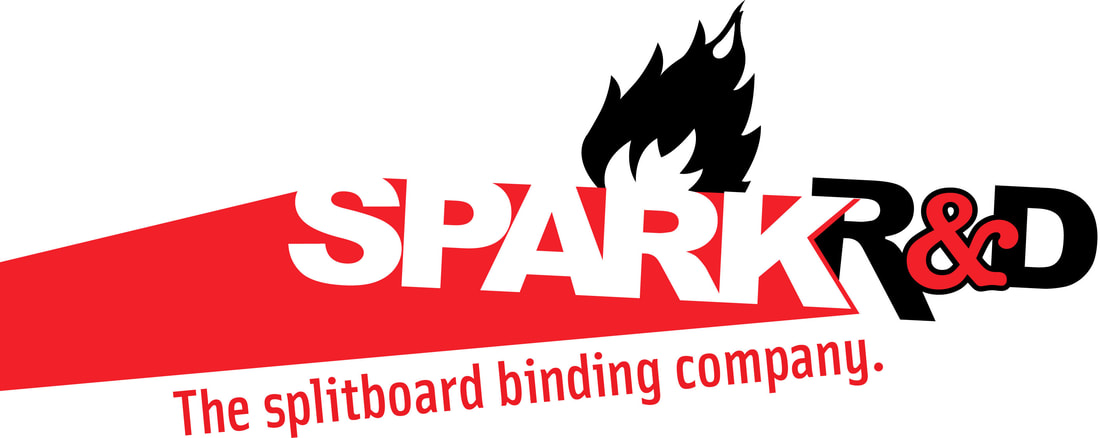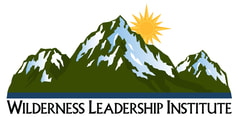Snowpack Summary January 31, 2023
Posted by Allen Giernet @ 7:20 am (this summary expires in 24 hours)
This summary applies to backcountry areas only.
The Bottom Line –
Following the recent storms we have reports of 5” – 8” of snow. Wind Slab Avalanches will be likely below ridges on terrain features where crossloading is possible. Winds were Southerly during the storm and shifted to Northeasterly at the end of the storm. Wind Slabs will be possible on Northerly aspects as well as Southerly aspects due to changing wind directions and too topographical influences. Look for signs of windrifted and transporting snow, wind sculpting and pillowed firm hollow snow. All of these signs will indicate windslab development. If you encounter this type of snow move into different terrain and remain on slopes less than 30°. Dry loose avalanches will be possible due to the firm conditions prior to the recent storm.
Please share your observations with us at the avalanche center Submit Reports page.
Posted by Allen Giernet @ 7:20 am (this summary expires in 24 hours)
This summary applies to backcountry areas only.
The Bottom Line –
Following the recent storms we have reports of 5” – 8” of snow. Wind Slab Avalanches will be likely below ridges on terrain features where crossloading is possible. Winds were Southerly during the storm and shifted to Northeasterly at the end of the storm. Wind Slabs will be possible on Northerly aspects as well as Southerly aspects due to changing wind directions and too topographical influences. Look for signs of windrifted and transporting snow, wind sculpting and pillowed firm hollow snow. All of these signs will indicate windslab development. If you encounter this type of snow move into different terrain and remain on slopes less than 30°. Dry loose avalanches will be possible due to the firm conditions prior to the recent storm.
Please share your observations with us at the avalanche center Submit Reports page.

Wind Slab avalanches are the release of a cohesive layer of snow (a slab) formed by the wind. Wind typically transports snow from the upwind sides of terrain features and deposits snow on the downwind side. Wind slabs are often smooth and rounded and sometimes sound hollow, and can range from soft to hard. Wind slabs that form over a persistent weak layer (surface hoar, depth hoar, or near-surface facets) may be termed Persistent Slabs or may develop into Persistent Slabs.

Dry Loose avalanches are the release of dry unconsolidated snow and typically occur within layers of soft snow near the surface of the snowpack. These avalanches start at a point and entrain snow as they move downhill, forming a fan-shaped avalanche. Other names for loose-dry avalanches include point-release avalanches or sluffs.
General Summary
#1 Windslab avalanches – will be likely on NW, N , NE, SE, S & SW due to changing wind directions during the storm and into today. There is enough transportable snow to continue building windslabs today on the Southerly aspects. Look for signs of transporting snow and the indications of recently transported snow. Wind sculpting, cornices developed at ridges and scouring with pillowed firm snow opposite. Firm hollow sounding snow will indicate you are on a windslab. If you encounter any of these signs avoid pillowed snow and move to a different aspect or lower angle terrain below 30°.
#2 Dry loose avalanche – With the recent snow following a warming period and firm melt freeze crusts developing prior to the storm we can expect poor bonding of the recent snow. Small loose dry avalanches will be possible and could be large if triggered by a windslab avalanche entraining more snow as it runs down the slope. These avalanches will generally knock you off your feet but could have dire consequences if you are swept into terrain traps. Be aware of what is below you if you encounter loose snow.
Exercise caution if venturing out into the mountains and use avalanche protocols, travel with a partner and bring your beacon, shovel and probe.
For Wednesday into Friday warming is forecast and Wet snow instability will become likely. Watch as the days warm for firm snow becoming unsupportable and sinking into boot top depth. Roller balls and pinwheels will also indicate wet snow instability. If you encounter any of these signs as the week progresses move to different terrain and avoid slopes over 30°.
Please share any information when you are out in the mountains. Even a photo is helpful. Submit observations to Submit Reports page.
#1 Windslab avalanches – will be likely on NW, N , NE, SE, S & SW due to changing wind directions during the storm and into today. There is enough transportable snow to continue building windslabs today on the Southerly aspects. Look for signs of transporting snow and the indications of recently transported snow. Wind sculpting, cornices developed at ridges and scouring with pillowed firm snow opposite. Firm hollow sounding snow will indicate you are on a windslab. If you encounter any of these signs avoid pillowed snow and move to a different aspect or lower angle terrain below 30°.
#2 Dry loose avalanche – With the recent snow following a warming period and firm melt freeze crusts developing prior to the storm we can expect poor bonding of the recent snow. Small loose dry avalanches will be possible and could be large if triggered by a windslab avalanche entraining more snow as it runs down the slope. These avalanches will generally knock you off your feet but could have dire consequences if you are swept into terrain traps. Be aware of what is below you if you encounter loose snow.
Exercise caution if venturing out into the mountains and use avalanche protocols, travel with a partner and bring your beacon, shovel and probe.
For Wednesday into Friday warming is forecast and Wet snow instability will become likely. Watch as the days warm for firm snow becoming unsupportable and sinking into boot top depth. Roller balls and pinwheels will also indicate wet snow instability. If you encounter any of these signs as the week progresses move to different terrain and avoid slopes over 30°.
Please share any information when you are out in the mountains. Even a photo is helpful. Submit observations to Submit Reports page.
General Mountain Weather Forecast |
Weather Page Link
Click on the links below for the latest information
Click here for this Season's Snow Pack Summaries
To better understand the challenges and potential variability over the large area we are producing information for please read our Snowpack Summary - Format and Limitations
Disclaimer:
This Bulletin is designed to generally describe conditions where local variations always occur. Travelers are advised to exercise caution and make slope specific evaluations. As always, please treat this bulletin with appropriately guarded skepticism and make your own assessments. Help to provide more information to the community by reporting your observations
This Bulletin is designed to generally describe conditions where local variations always occur. Travelers are advised to exercise caution and make slope specific evaluations. As always, please treat this bulletin with appropriately guarded skepticism and make your own assessments. Help to provide more information to the community by reporting your observations
Latest Observtions
Click on the observation to go to the full report
|
Observation type -
Snowpack Location - San G Wilderness/ Jepson Date (yyyymmdd) - 20230121 Comment - We dug the pit on a NNE aspect with visible wind deposits to get an idea of the conditions in the Jepsen chutes. The rain crust that we found at about a meter depth in the pit location was exposed in some wind-scoured locations. Top 10 cm were a hard wind slab with fracture propagation on isolation. For the rest of the snowpack ECT resulted in no fracture. Total snow depth: 305 cm Snow pit: Pencil 0-5 cm Knife to 30 cm 4 Fingers grains to 70 cm Thin ( Finger to 90 cm Knife to 100 cm Loose layer (~1 cm thickness) at 105 cm Pencil to 145 cm Knife to 150 cm Pencil to 200 cm rain crust (2.5 cm thick) at 200 cm Pencil to fingers to 290 cm 4 fingers to 295 cm, ECTPV weak layer at 295 knife 295 to 305 --> 10 cm think wind slab, fracture propagating on isolation (consistent with small releases observed on leeward N-NW aspects below jepsen ridge) Snow temperature was -9C at 15cm below the surface, with a temperature gradient of less than 0.5C / 10cm. |
Observation type
Snowpack Location - Heart Bar Peak Date (yyyymmdd) -20230121 Comment Saturday AM tour near treeline in the SG mountains with the goal of scoping higher elevation snowpack and assess stability. Key takeaways on the approach: - Evidence of massive windloading present near ridgelines in the form of small cornices and wind lips. - Solar input was quickly melting huge chunks of rime ice from trees, littering ground with glass-like debris - Surface hoar observed at the start of the tour on clear, high elevation spots (see photo). It was getting zapped by the sun and warmer temps by early afternoon. - Snow surface is highly variable on all but the most protected aspects. Currently a mix of ice, windboard, sastrugi and granular wind-drifted snow. - Some faceted snow on highest, steepest aspects. Looks like it's rounding as temps have steadily increased in recent days. Dug a pit on a NNE test slope near where we planned to ski, that was obviously affected by windloading, so take with a grain of salt. - 175cm deep - 4F 155-175 - melt/freeze crust at 155 - pencil hard from 155 to ground with faintly visible layers (no pronounced crusts, though) - CT12 failure at 165, Q3 shear. - column was cohesive and seemingly well bonded below soft snow surface Key takeaways for me are that the snowpack does appear to be bonding, although the primary concerns are still large swaths of boilerplate/ice and some breakable crusts that pose danger in exposed terrain. |
Observation type
Snowpack Location - Waterman Ski Area Date (yyyymmdd) - 20230119 Comment - Snow pit and conditions description Snow pit near the base of Waterman. 9am 1/19/21 NE aspect 6944’ Top Dust on 2 inch sun crust 2-3 inch 4F sugary layer 0.5-1inch rain crust 1 inch 1F snow 7-8 inches P hard consolidated snow Ground Above freezing temps Wind 0-5mph Clear skies Had decent skiing on shallow snow in the late morning on a S facing aspect near the same elevation. Had very firm but enjoyable conditions on N/NE aspects in the early afternoon at Waterman. Top melt-freeze crust was cracking a bit on the skin up but only broke through a couple times on the way down. |
Observation type
Snowpack Location - Big Pines Date (yyyymmdd) - 20230117 Comment - Comment Lunchtime tour on Tuesday to scope out the snow that fell late Monday. This round of precip was much colder and thankfully not followed by rain or heavy winds. From 7000-7500 I'd estimate 5-8cm of soft, dry snow fell on a base of refrozen mank. Above 8k it was closer to 10-15cm. Wind loading on NE aspects continues to be the big takeaway, with large mounds of drifted snow and pillows evident near ridgelines. One obviously wind loaded test slope I stomped on cracked immediately and propagated several feet in each direction (see photo). Other areas closer to my turnaround point at 8200ft had large cornices standing 130cm+ high. Will continue to monitor for how the next period of dry, cool days affects the current soft snow surface. |
General Caution
You should always use safe terrain management and carry avalanche rescue equipment in the backcountry. Most avalanches are triggered by someone in the party or the victim. Practice with your rescue gear often and be prepared should the worst happen. Though we do not have an avalanche forecast center in this area as of yet, the information posted and shared here as well as the resources available on this site will help to make informed decisions for your backcountry travels. Use avalanche forecasts in your travels wherever available and be aware that avalanche ratings are general information. Elevation, location, geographic variability’s, slope aspect and angle all have effects on the particular area you travel in. This is only one piece of the information you should use in your decision making process. There is no substitute for avalanche education, for more resources and information as well as education please refer to our resources page.
You should always use safe terrain management and carry avalanche rescue equipment in the backcountry. Most avalanches are triggered by someone in the party or the victim. Practice with your rescue gear often and be prepared should the worst happen. Though we do not have an avalanche forecast center in this area as of yet, the information posted and shared here as well as the resources available on this site will help to make informed decisions for your backcountry travels. Use avalanche forecasts in your travels wherever available and be aware that avalanche ratings are general information. Elevation, location, geographic variability’s, slope aspect and angle all have effects on the particular area you travel in. This is only one piece of the information you should use in your decision making process. There is no substitute for avalanche education, for more resources and information as well as education please refer to our resources page.






















